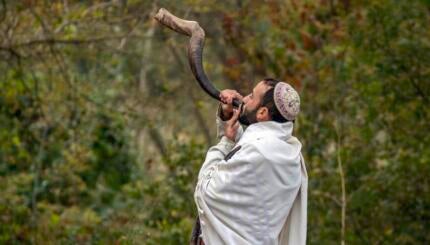One of my family’s traditions has always been to make sure to invite new people to our holiday meals every year. Just as there are many lonely people around the time of Thanksgiving and New Years, there are many lonely Jewish people around the time of Rosh Hashanah and Yom Kippur. The High Holidays come in the autumn, just after many people have moved to a new place for school or a job. Secular New Year, on Jan 1, is mostly artificial. There is not much that really starts anew every January 1st, but many things begin in the fall, around the time of Rosh Hashanah. And these new beginnings can be difficult, intimidating, trying, and they can make us lonely, especially when we’re away from our closest family and friends.
Think of Hagar, Abraham’s second wife, who we read about in the Torah reading on the first day of Rosh Hashanah. Sent away from her home, she is adrift in the desert, with only her thirsty child. She is on the brink of death, and is only saved by a miracle. There are people like Hagar in your community—perhaps they aren’t homeless (though they might be) but they are adrift and lonely. Rosh Hashanah is a great time to reach out to new people, make a connection, and offer them a place at your holiday table. Not only is a it a great way to help someone, but it means you’ll be starting the Jewish year with a huge mitzvah already chalked under your name. What could be better?
Rosh Hashanah
Pronounced: roshe hah-SHAH-nah, also roshe ha-shah-NAH, Origin: Hebrew, the Jewish new year.
Torah
Pronunced: TORE-uh, Origin: Hebrew, the Five Books of Moses.


